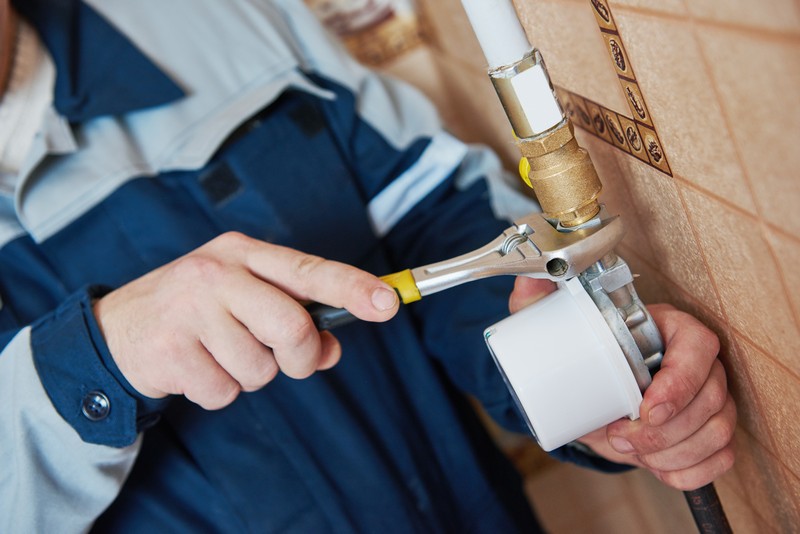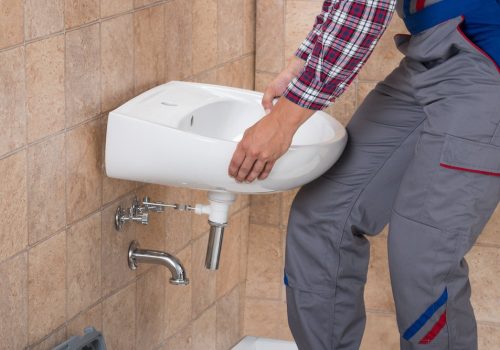Future of Plumbing: Trends and Advancements Approaching
Future of Plumbing: Trends and Advancements Approaching
Blog Article
Almost everyone is bound to have their personal views about The Future of Plumbing: Trends and Innovations to Watch.

Intro
The plumbing sector is going through a transformative stage driven by technological advancements and growing issues for sustainability and performance. This post explores emerging trends and innovations shaping the future of plumbing.
Regulative Landscape
Regulative structures play a vital duty in shaping the fostering of pipes innovations, with criteria and codes governing whatever from water efficiency to product safety. As innovations remain to develop, governing bodies should adapt to make sure customer defense and environmental stewardship.
Future Overview
The future of pipes is identified by continued advancement and assimilation with various other fields such as IoT, renewable resource, and building automation. By accepting lasting practices, leveraging emerging technologies, and focusing on user-centric layout, the plumbing industry is positioned to resolve the advancing requirements of culture while lessening its ecological impact.
Enhanced Reality in Plumbing
Augmented Fact (AR) modern technology is revolutionizing plumbing by giving technicians with real-time aesthetic support for repairing and repair service tasks. AR-enabled smart glasses or mobile applications overlay electronic information onto the physical atmosphere, helping plumbers imagine pipe layouts, recognize concealed leakages, and execute repair services with accuracy.
Impact of 3D Printing
The development of 3D printing has actually presented brand-new possibilities in manufacturing pipes elements. From custom-designed fixtures to complex pipeline installations, 3D printing permits quick prototyping and on-demand production, reducing preparations and enabling better customization in pipes design.
Health And Wellness Features
In response to enhanced concerns for health and wellness, pipes components are integrating features such as antimicrobial surface areas, touchless procedure, and self-cleaning devices. These developments not only improve health yet additionally promote individual convenience and ease.
Hygiene-focused Fixtures
Touchless faucets, self-sanitizing commodes, and antimicrobial surface areas are becoming progressively common in household and industrial settings, minimizing the threat of germ transmission and promoting a cleaner, much healthier setting.
Water Top Quality Tracking
Innovations in water quality tracking innovations allow property owners to monitor the purity and safety of their water system in real-time. Smart water high quality sensors can discover pollutants, pH degrees, and temperature variations, equipping individuals to take aggressive steps to ensure water safety.
Remote Plumbing Providers
Remote diagnostics and virtual assistance are changing the means pipes services are provided. Through video clip conferencing and remote gain access to modern technologies, plumbing professionals can troubleshoot concerns, offer support for do it yourself fixings, and even do remote examinations, offering higher availability and comfort to home owners.
Obstacles and Opportunities
While pipes innovations hold tremendous pledge, they likewise present difficulties such as information personal privacy issues, regulative conformity, and the requirement for labor force training. Attending to these obstacles needs partnership in between sector stakeholders and governing bodies to make certain safe and accountable application of brand-new technologies.
Smart Pipes Equipments
Including wise technology right into pipes systems enables remote monitoring, leak detection, and automated maintenance. Smart sensing units and IoT (Net of Points) tools permit home owners and plumbing technicians to keep an eye on water use and spot issues in real-time, causing more reliable resource monitoring and aggressive maintenance.
Water Performance Solutions
With boosting emphasis on water conservation, innovative remedies are being established to minimize water waste in pipes systems. High-efficiency components, greywater recycling systems, and clever watering controllers are among the technologies aiding customers decrease their water footprint while preserving comfort and benefit.
Sustainable Products
The change towards sustainability reaches plumbing products, with a growing preference for green options. Eco-friendly piping products, such as PEX (cross-linked polyethylene) and HDPE (high-density polyethylene), offer durability and resistance to corrosion without jeopardizing ecological stability.
Anticipating Upkeep
Predictive upkeep techniques take advantage of data analytics and machine learning algorithms to expect and avoid pipes concerns prior to they happen. By evaluating historic information and performance metrics, anticipating maintenance algorithms can identify patterns and abnormalities, allowing proactive interventions to avoid costly repairs and disturbances.
Conclusion
In conclusion, the future of plumbing is specified by a convergence of modern technology, sustainability, and user-centric style. By welcoming wise services, sustainable materials, and proactive upkeep practices, the plumbing market can boost performance, promote safety and security, and add to a more lasting future.
Plumbing Industry Trends You Need To Know
Smart technology in plumbing
Homeowners want to be able to manage their homes from their phones. The technology exists to make that happen. From smart toilets to leak detector devices, the whole plumbing system can be managed on an interconnected network made up of sensors, IoT devices, and machine learning algorithms.
This allows for wireless control to turn appliances on and off, automate routines, and access advanced monitoring to track water usage and flag potential issues. Smart technology streamlines water consumption, maintenance and energy usage, creating a more efficient system.
Green plumbing
The data analysis possible with smart technology not only improves convenience and cost-effectiveness but also fulfills a high-priority customer desire – sustainability. Consumers are very aware of their impact on the planet and want plumbing solutions to reduce damage and support sustainability. Eco-friendly plumbing solutions are already starting to emerge.
Customers can opt for low-flow toilets, water-saving faucets, and connections to sustainable energy sources. Beyond monitoring water consumption, customers can conserve water through the installation of greywater systems. This is a system that collects water that has been used but is still clean enough for some household uses such as toilet flushing.
Shorter product pipeline
To keep up with modern plumbing, plumbers need modern tools that enable them to complete jobs more efficiently. One technology making strides in this area is 3D printing. By 3D printing key plumbing fixtures, plumbers can reduce wait times even for specialized fixtures. It minimizes delays often seen in traditional manufacturing that frustrate customers and prevent plumbers from taking on more work.
Off-site repairs
Augmented reality is making a splash in many industries including plumbing. Plumbers can map a building online so they can explore the plumbing system through augmented reality, identifying areas of maintenance and repair completely digitally. This technology can be applied quite widely in plumbers’ work including planning installations and training new recruits. It’s safer, smarter and more efficient.
Low-footprint materials
Another way for plumbing companies to reduce their environmental footprint and meet the customer demand for sustainability is by using recycled materials in their work. The products they source and manufacture such as pipes, fixtures and faucets can be made from recycled materials. This saves the planet while being just as effective.
Onsite water purification
Additionally, plumbing companies can be advocates of water conservation and ease the financial and environmental concerns of customers by offering water purification systems. New water purification technology such as reverse osmosis systems and UV systems make it possible for homeowners and business owners to thoroughly cleanse water, removing contaminants onsite. This means the water can be safely reused in more ways than greywater can be, establishing a water recycling loop.
Tankless water heaters
Another innovation of modern plumbing is tankless water heaters. The idea is that the water is heated on demand as it runs through the system instead of being heated in a water tank. This is more energy efficient and therefore cost-effective and eco-friendly because water isn’t heated needlessly.

I ran across that blog post about Innovative Plumbing Trends Transforming Construction while surfing around the search engines. Make sure you pause to distribute this entry if you enjoyed it. Many thanks for your time. Kindly check our blog back soon.
At This Website Report this page